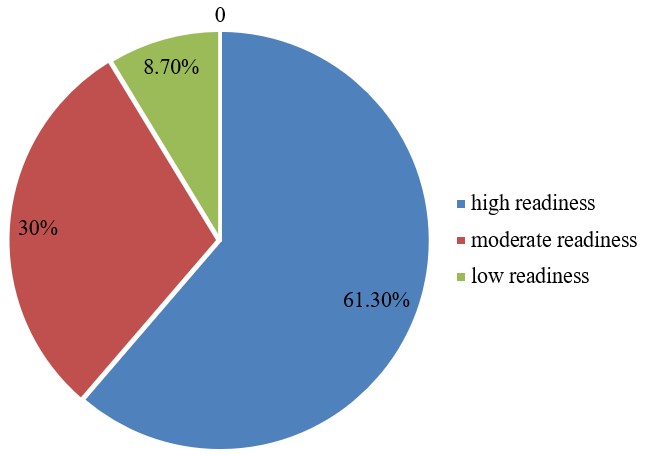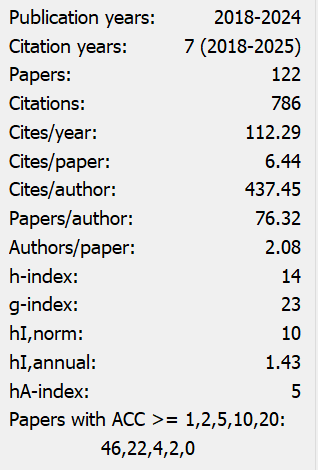Situational Approach of Leadership - Case Study at "Kujtesa" Company
Abstract
In the contemporary time in which we live, the approach of leaders plays an important role in implementing the strategy of the “Kujtesa” company. The purpose of this research is to show the application of leadership style to their subordinates. The methodology used in the study is a combination of quantitative and qualitative data. The results of the research were processed with the data of 100 employees and managers of the “Kujtesa” company. The data were processed using the statistical analysis of SPSS program. This research includes the analysis of key factors of leaders' style with their subordinates such as: human resource management, work structure, management readiness to face new challenges and new situations. This study shows a clear picture of the functioning of leaders' approaches to subordinates.
References
Alas, R., Tafel, K., & Tuulik, K. (2007). Leadership style during transition in society: case of Estonia. Problems and Perspectives in Management, 5(1), 50-60.
Alderfer, C. P. (1969). An empirical test of a new theory of human needs. Organizational Behavior and Human Performance, May, 142-75. https://doi.org/10.1016/0030-5073(69)90004-X
Aldrich, H., & Ruef, M. (2006). Organizations Evolving, 2nd ed., Sage, Thousand Oaks, CA. Allen, S. and Hartman, N. (2008). Leadership development: an exploration of sources of learning.
Allio, R. J. (2005). Leadership development: Teaching versus learning. Management Decision, 43(7/8), 1071-7. https://doi.org/10.1108/00251740510610071
Andrews, J., Cameron, H., & Harris, M. (2008). All change? Managers"experience of organizational change in theory and practice". Journal of Organizational Change Management, 21(3), 300-314. https://doi.org/10.1108/09534810810874796
Antonakis, J., Cianciolo, A. T., & Sternberg, R. J. (2004). Leadership: past, present, and future. Advanced Management Journal, 73(1), 10-62.
Barney, J. B. (1986). Organizational culture: Can it be a source of sustained competitive advantage? Academy of Management Review, 11, 656-665. https://doi.org/10.5465/amr.1986.4306261
Bass, B. M. (1998). Transformational Leadership: Industrial, Military and Educational Impact”. Lawrence Erlbaum, Mahwah, NJ.
Beck , D . E., & Cowan, C. C. (1996). Spiral Dynamics: Mastering Values , Leadership , and Change , Blackwell Publishers, Oxford.
Becker , T . E., Billings , R, S., Eveleth , D. M., & Gilbert , N . L . (1996). Foci and biases of employee commitment: implications for job performance. Academy of Management Journal, 39(2), 464-482. https://doi.org/10.2307/256788
Berry, L. L., & Parasuraman, A. (1992). Prescriptions for a service quality revolution in https://doi.org/10.1016/0090-2616(92)90071-T
Bhatnagar, D. (2007). Strategic HRM-A Tool To Leverage Organizational Effectiveness. Journal of IPM, Meerut , 8(2).
Bonne, E. L., & Kurtz, L. D. (2011). Contemporary Business. United States of America.
Caldwell, C., & Dixon, R. (2010). Love, forgiveness and trust: critical values of the modern leader. Journal of Business Ethics, 93, 91-101. https://doi.org/10.1007/s10551-009-0184-z
Canco, G., Kërçini, D., Zegali L., & Ciroka N. (2012). Organizational behavior, Tirana, albania.
Cangemi, J., Burga, W., Lazarus, H., Miller, R., & Fitzgerald, J. (2008). The real work of the leader: a focus on the human side of the equation. Journal of Management Development, 27(10), 1026-1036. https://doi.org/10.1108/02621710810916286
Dvir, T., Eden, D., Avolio, B. J., & Shamir, B. (2002). Impact of transformational leadership on follower development and performance: a field experiment. Academy of Management Journal, 45(4), 735-744. https://doi.org/10.5465/3069307
Egner, T. (2009). Behavioral Leadership- The managerial Grid. Germany.
Fiedler, F. E., & Chemers, M. M. (1984). Improving leadership effectiveness: The leader match concept (2nd ed.). New York.:Wiley.
Gordon, J. (2003). The Pfeiffer Book of Successful Leadership Development Tools. San Francisco, USA.
Hofstede, G., & Peterson, M. (2000). Culture: National values and organizational practices. In N. Ashkanasy, C. Wilderom, & M. Peterson (Eds.), Handbook of organizational culture and climate (pp. 401-416). Thousand Oaks, CA: Sage.
Jansson, N. (2013). Organizational change as practice: a critical analysis. Journal of Organizational Change Management, 26(6), 1003-1019. https://doi.org/10.1108/JOCM-09-2012-0152
Koli, Z. Shyqyri, Sh. (2005). Human Resources Management. Tirana, Albania.
Kotter, P. J. (2008). Force For Change: How Leadership Differs from Management. New York, USA.
Maxwell C. J. (2007). The 21 Irrefutable Laws of Leadership Workbook: Revised and Updated. United State of America.
McCauley, D. C., & Velsor, V. E. (2004). The Center for Creative Leadership Handbook of Leadership Development. San Francisco.
McIntyre, R. M., Jordan, P., Mergen, C., Hamill, L., & Jacobs, T. O. (1993). The Construct Validity of the CPA: Report on Three Investigations. Alexandria, VA: U. S.Army Research Institute for the Behavioral and Social Sciences.
Mehrotra, A. (2005). Leadership styles of Principals. New Delhi.
Northouse, G. P. (2013). Leadership: theory and practice. Michingan.
Pride, W., Hughes, R., & Kapoor, J. (2009). Business. USA.
Puccio, J. G., Mance, M., & Murdock, C. M. (2011). Creative Leadership: Skills That Drive Change. United states of America.
Ramosaj, B. (2007). Management - Basics of management. Pristina.
Ramosaj, B. (2012). Management – Creative management with leadership. Pristina, 2012.
Tracy, B. (2013). Delegation and supervision. New York.


This work is licensed under a Creative Commons Attribution 4.0 International License.
Copyright for this article is retained by the author(s), with first publication rights granted to the journal.
This is an open-access article distributed under the terms and conditions of the Creative Commons Attribution license (http://creativecommons.org/licenses/by/4.0/).


























